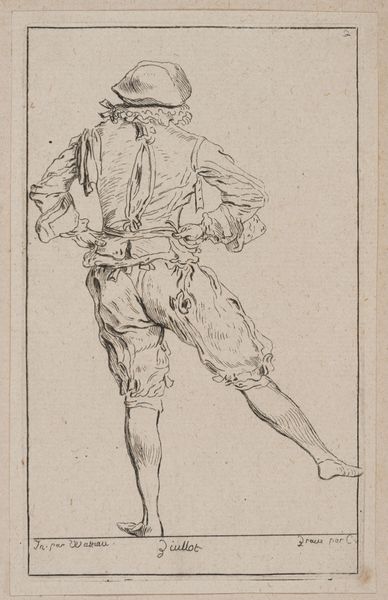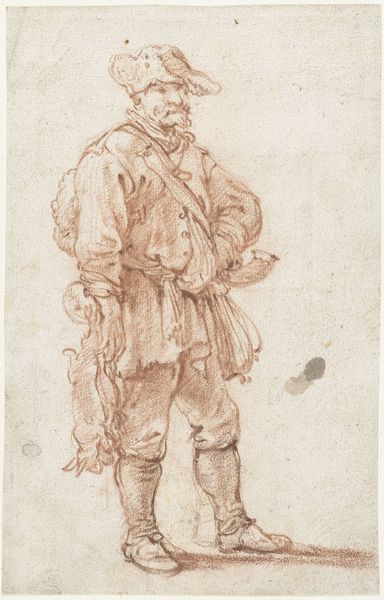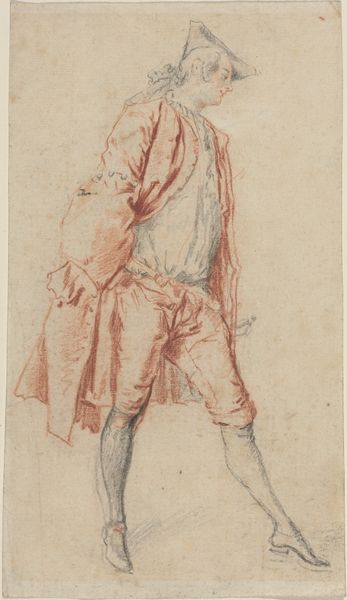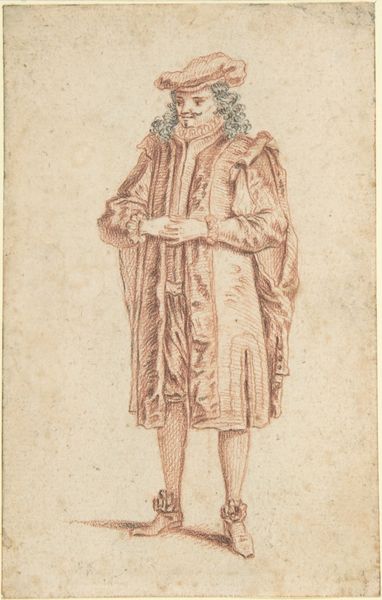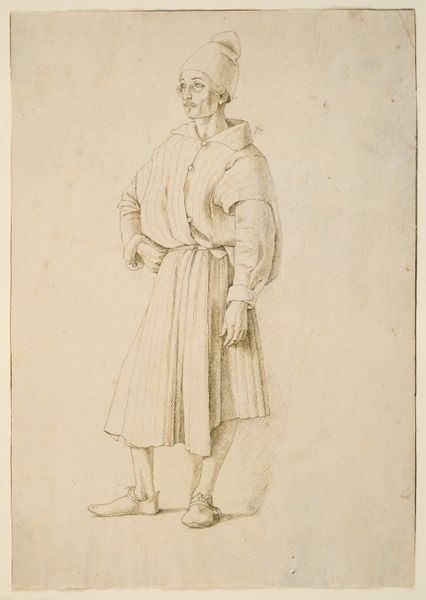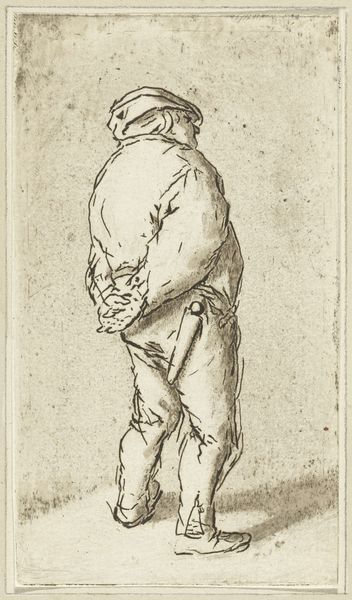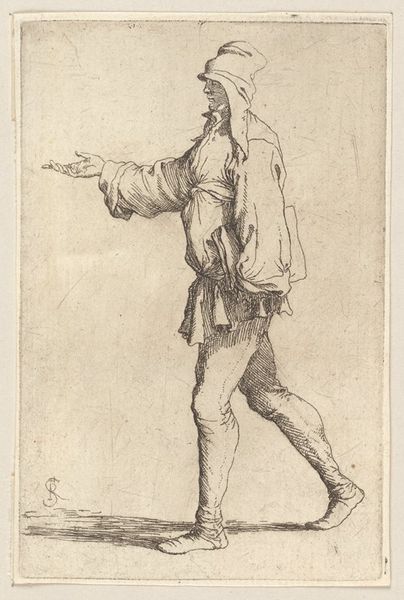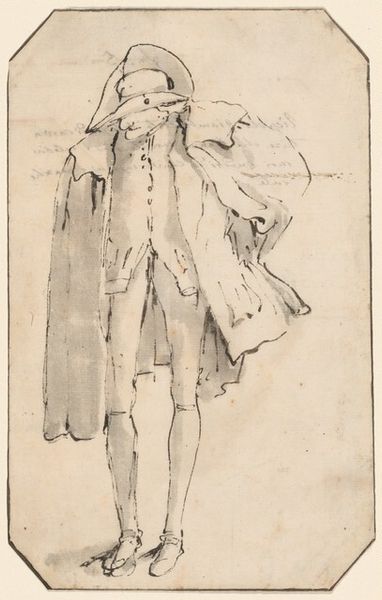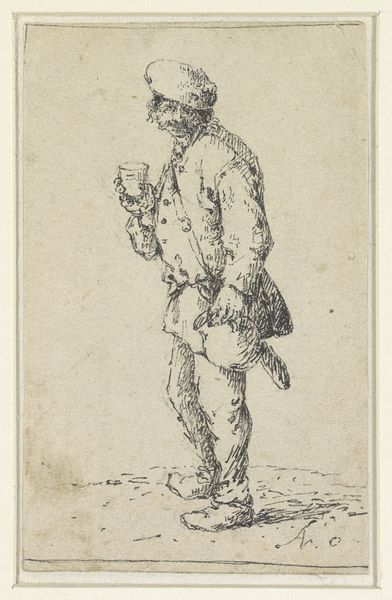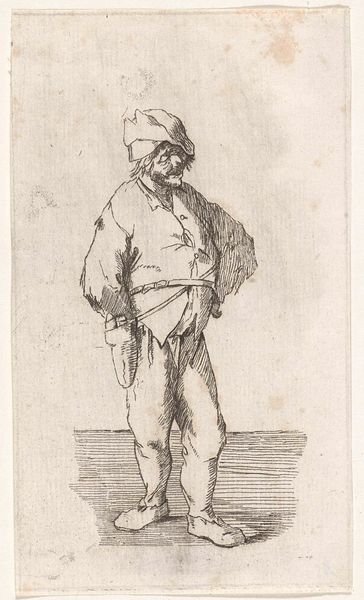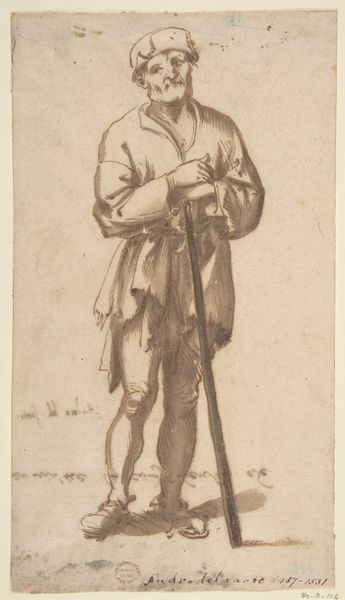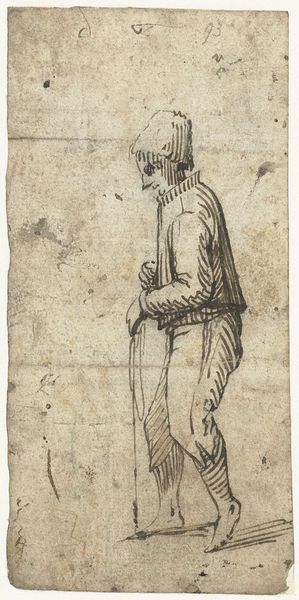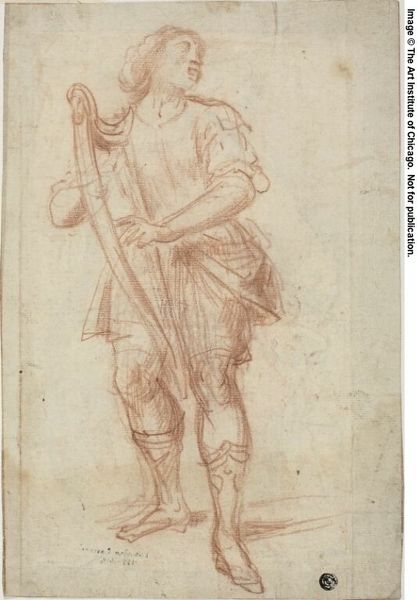
Dimensions: 4 7/8 x 3 1/8 in. (12.4 x 8 cm)
Copyright: Public Domain
Editor: Here we have Claude Gillot's "Fabio Costumed as a Doctor," dating sometime between 1685 and 1975. It's a drawing, seemingly done with coloured pencil, and it has a wonderfully theatrical quality. The figure's pose feels very deliberate, almost performative. What do you see in this piece? Curator: This drawing offers a glimpse into the performance of identity in the late 17th century. The "doctor's" costume isn't just clothing; it's a statement, a role assumed, possibly for purposes of satire or social critique. Consider the Commedia dell’arte tradition and the ways it allowed for social commentary through masquerade. How does the figure's posture – almost a caricature – play into these dynamics? Editor: I hadn’t considered it as satire, but that makes sense. His posture is quite exaggerated. The mask, the hat… they all contribute to a sense of artifice. Curator: Exactly! Think about the power structures at play. Who is given the authority to critique, and how do they do it safely? This costume could be read as a subversive act, using humor to challenge medical authority or even broader societal norms. And who was Fabio? What would it mean to dress *him* up as a doctor? Editor: So the drawing isn't just a portrait but a commentary on the social climate of the time? Curator: Precisely. Art provides insight into power, resistance, and identity negotiation of previous generations. It reflects ongoing dialogue, a conversation on agency and subversion through imagery. Editor: This has changed my perspective. I’ll definitely look into the social contexts of the piece further! Curator: Wonderful! Remember, art always invites us to interrogate not only what we see, but also the world that shaped it.
Comments
No comments
Be the first to comment and join the conversation on the ultimate creative platform.
